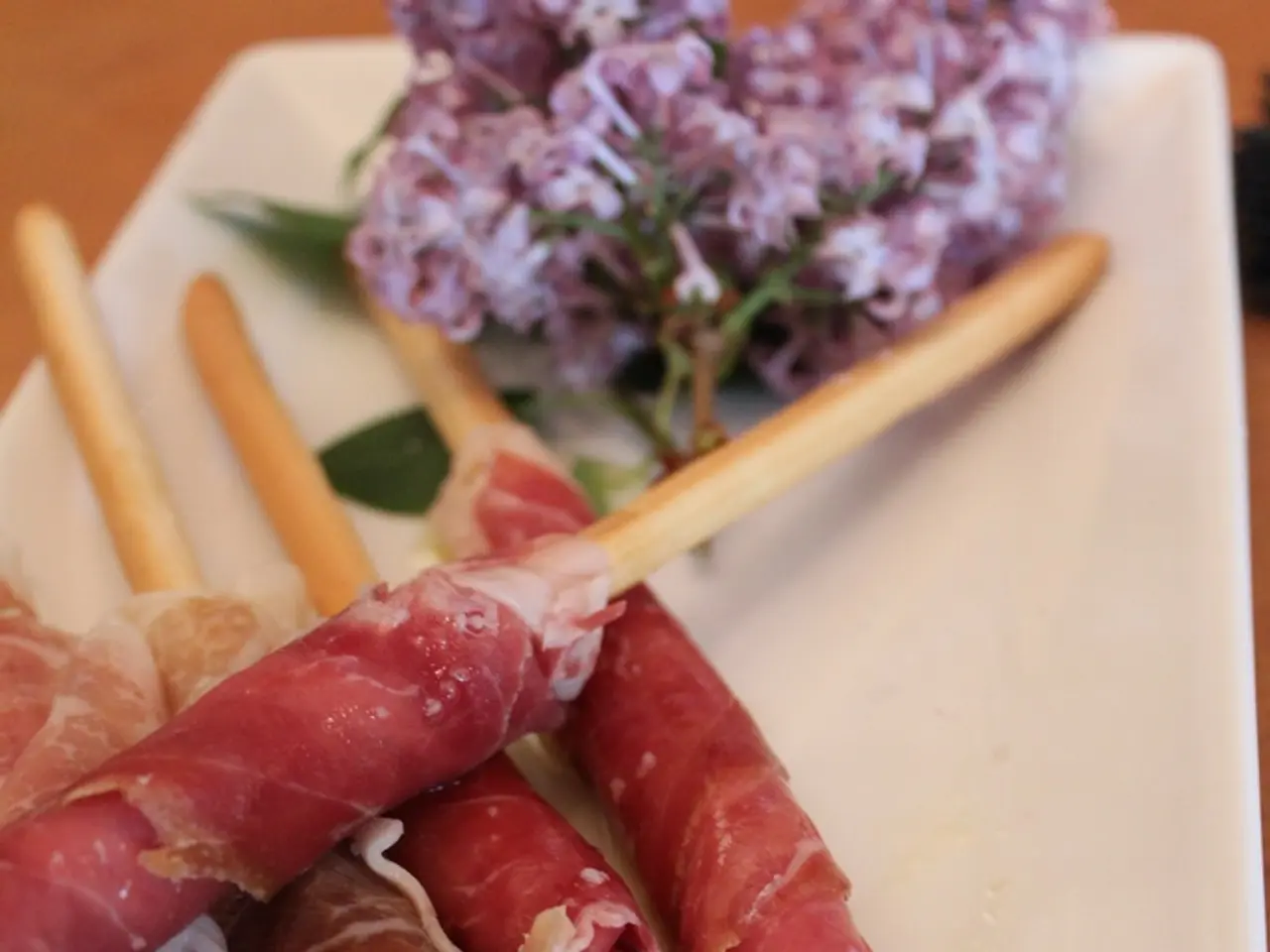Romans' iconic fish sauce replicated by modern scientists
A groundbreaking study has shed light on the production process of a staple condiment in ancient Roman cuisine - garum. The findings, published in the journal Antiquity, offer a unique insight into marine biodiversity before the era of industrial exploitation began.
Garum, a prized condiment renowned for its intense umami flavour, was made by fermenting small fish in salt. The production process typically involved several steps: small fish, often sardines or anchovies, were layered with large amounts of salt in clay vats at coastal processing centres known as *cetariae*. The mixture was left to ferment naturally under the sun for weeks or months. As the fish broke down, a pungent, amber-coloured liquid rose to the top, which was strained and bottled to create garum [1][2][3].
Recent DNA analysis conducted at the Adro Vello site in northwest Spain has revealed that European sardines were the primary fish species used in the production of garum. This discovery was made possible by extracting genetic material from ancient fish remains found in a Roman-era fish-salting vat [1][2][3]. The use of sardines aligns with historical descriptions of garum, which highlighted its strong umami taste and pungent aroma, similar to anchovy paste and soy sauce [3].
The Romans, who called the Mediterranean "Mare nostrum" or "Our sea", had a diet rich in fish, with fish playing a key role. The Romans likely exported garum by sea in ceramic amphorae from Adro Vello [5]. Fragments of these ceramic amphorae still litter the site at Adro Vello, providing evidence of the vast network of salting plants established by the Romans across Europe, Africa, and the Middle East.
Interestingly, other plants may have used anchovies, mackerel, and sprat in addition to sardines in the production of garum. The team wants to know how recipes of garum varied across the Empire, mapping the different recipes [4]. Garum was the most popular Roman sauce, produced in industrial quantities and traded across the empire.
The study on garum production provides valuable insights into the past, allowing scientists to reconstruct what Romans ate, where they fished, and how far their trade networks stretched. By matching ancient fish DNA to known species and populations, researchers can gain a better understanding of the marine biodiversity during the Roman era [6]. The findings also help us better understand (and potentially recreate) one of the most famous Roman sauces, garum [1].
The discovery of the sardine-based garum recipe at Adro Vello is the first time researchers have found clear evidence of how garum was made. The study not only offers a fascinating glimpse into ancient cooking methods but also provides a rare, direct look at marine biodiversity before industrial exploitation began, offering insights into the sustainability of ancient fisheries.
- The science of ancient food production has taken a significant leap with the publication of a study on the production process of garum, a staple condiment in ancient Roman cuisine, in the Journal of Antiquity.
- This research, focusing on marine biodiversity before the advent of industrial exploitation, indicates that European sardines were the primary fish species used in the creation of garum, according to DNA analysis conducted at the Adro Vello site in northwest Spain.
- In today's environmental-science discourse, the findings offer a unique insight into sustainable fishing practices from the past, with the Romans apparently exporting garum by sea in ceramic amphorae from Adro Vello.
- As technology advances, scientists are now able to extract genetic material from ancient fish remains, providing a window into the lifestyle and diet of ancient Romans, including their consumption of garum.
- The production of garum had a significant impact on food-and-drink industries, as it was the most popular Roman sauce and was traded extensively across the empire, showcasing the interconnectedness of the tech-driven trade networks of the era.
- Moving forward, the ecological implications of this study reveal that the history of marine biodiversity can guide our present and future decisions regarding the sustainability of food production and technology in the service of a healthier environment.




